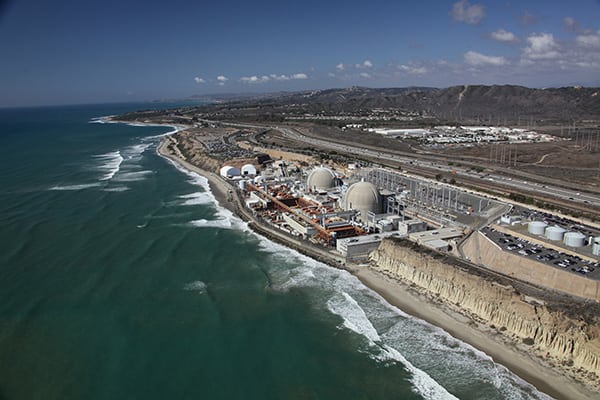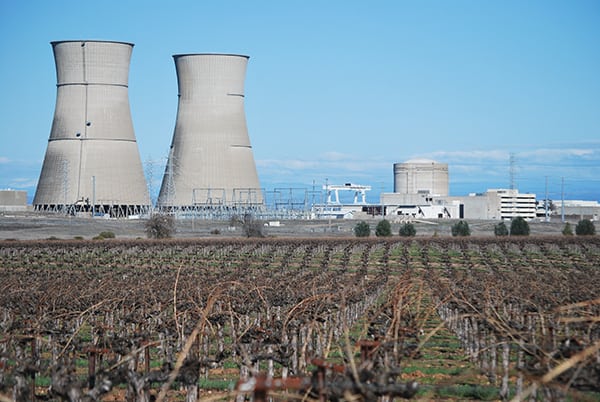Nuclear Plant Closings: What About the Workers?
Power plant jobs have typically come with a sense of security—after all, everyone needs electricity. But in today’s generating environment, even workers at nuclear plants are finding their positions are less and less secure.
Once upon a time, obtaining a job at a nuclear power plant meant a person was set for life. If an individual did at least acceptable work and kept their nose clean, they were rewarded with a career that offered good pay and excellent benefits, including top-quality medical coverage and a decent pension. Those days may be coming to an end.
Renewable energy mandates in many states have resulted in what nuclear industry proponents say is an unfair advantage for wind and solar resources. Expanded nuclear regulations and safety requirements have forced expensive upgrades and large investments that don’t necessarily create economic value for companies. These developments have put a pinch on nuclear power plant profits.
These days, companies must look for every opportunity to cut costs and reduce overhead. A lot of work is contracted out, reducing full-time employee numbers and the associated benefits. Pensions and their defined benefits have given way to 401(k) retirement accounts with defined contributions. Traditional health insurance has been converted to high-deductible health plans and employee-funded health savings accounts. But even with these changes, some power plants are finding it difficult to remain profitable.
Although extreme winter weather has raised awareness about the vulnerability of relying heavily on natural gas as a fuel source, it is still widely considered to be a low-cost, highly flexible source of energy. With some experts estimating that shale gas reserves could last up to 100 years, natural gas is likely to continue growing its share of the generation mix in the U.S. electric power market. Even though natural gas–fired facilities require personnel, the numbers are typically far fewer than are required at traditional nuclear or coal-fired plants.
Nuclear Shutdowns
Since October 2012, four nuclear power plants have announced that they would close permanently, removing almost 4.2 GW of capacity from the U.S. electrical grid. Prior to these announcements, no nuclear plant had been decommissioned since 1997. Although two of the plants had extenuating circumstances leading to their demise, thin profit margins have certainly made retiring the units much easier to justify.
The Kewaunee Power Station (Figure 1) in Wisconsin was the first to officially declare its intent to close. When announced, David Heacock, president of Dominion Nuclear and chief nuclear officer of Dominion said, “This decision was based purely on economics. The dedicated employees have operated the station safely and well.” On May 7, 2013, the plant was taken offline for the last time.
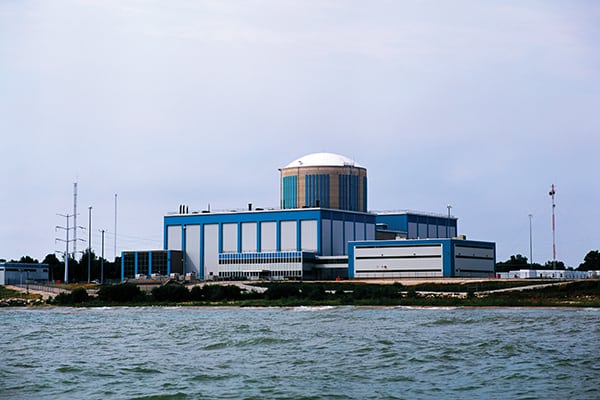 |
| 1. Kewaunee Power Station. The 556-MW plant owned by Dominion shut down permanently in the spring of 2013. Courtesy: Dominion |
Another plant struggling with the current market situation is Vermont Yankee Nuclear Power Station (VY, Figure 2). Entergy said that sustained low power prices, high cost structure, and wholesale electricity market design flaws for the plant drove its decision to close and decommission the facility. It will run through its current fuel cycle and is expected to cease operation near the end of this year.
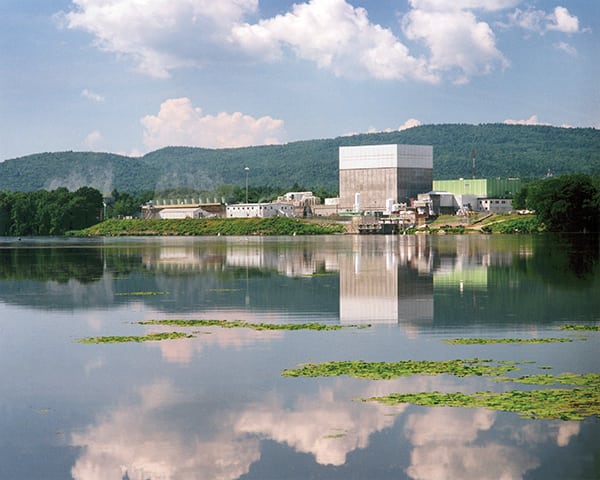 |
| 2. Vermont Yankee Nuclear Power Station. Entergy plans to close the 605-MW plant at the end of its current fuel cycle, expected in the fourth quarter of 2014. Courtesy: Nuclear Regulatory Commission |
Not that long ago, the future seemed bright. Both Kewaunee and VY had been granted 20-year license extensions by the Nuclear Regulatory Commission (NRC) in early 2011, which would have allowed continued operation through 2033 and 2032 respectively.
In Florida, the Crystal River Nuclear Plant (CR3, Figure 3) last came offline in September 2009 when it shut down for a scheduled maintenance and refueling outage. The unit was never restarted because, while replacing the CR3 steam generators (SGs), engineers discovered a delamination (or separation of concrete) within the containment building that surrounds the reactor vessel. Although the damage was repaired, additional delamination was later discovered, and Duke Energy determined that retiring the plant was its best option.
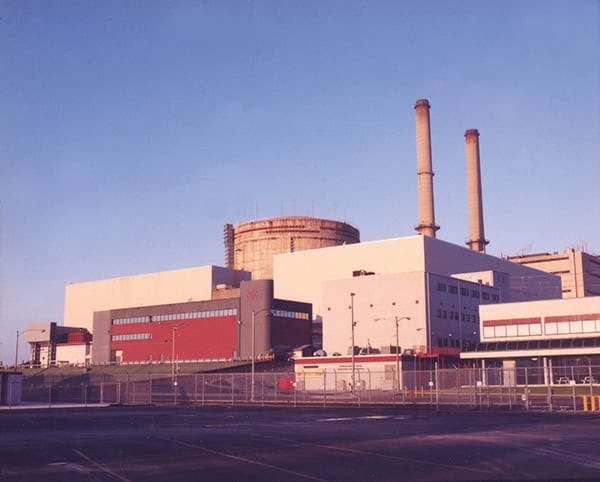 |
| 3. Crystal River Nuclear Plant. Issues with the reactor containment led Duke Energy to permanently close the 860-MW unit. Courtesy: Nuclear Regulatory Commission |
The San Onofre Nuclear Generating Station (SONGS, Figure 4) experienced a similar fate. Southern California Edison (SCE) had replaced the SGs in both of its operating units—Units 2 and 3—between September 2009 and February 2011. In January 2012, station operators detected a leak in a Unit 3 SG tube. Further investigation revealed unexpected tube-to-tube wear in both units caused by fluid elastic instability (or excessive tube vibration). After nearly a year and a half of testing and analysis, the decision was made to permanently retire the facility on June 7, 2013.
Making the Transition
It is difficult for everyone involved when a plant closes. Independent system operators must manage the electrical grid differently in order to adjust for the lost generation. In California, the Huntington Beach facility converted its generators to synchronous condensers for voltage support after the closing of SONGS (see “AES Uses Synchronous Condensers for Grid Balancing” in the March 2014 issue of POWER, online at powermag.com). Companies must deal with the cost of decommissioning and a loss of operating income from the facility. And then there are the workers.
As plants close, some employees are able to take early retirement, but most were in the workforce for a reason, and retirement wasn’t part of their immediate plan.
The uncertainty can be very difficult for employees. Will their jobs be eliminated? Will they be able to transfer to the decommissioning team or to another operational plant? Will relocation be required?
For their part, all four companies that recently announced nuclear plant closings have indicated that they want to ease the transition for their personnel, but deciding the best and most cost-effective way to accomplish that can be difficult.
According to Heather Danenhower, senior communications consultant for CR3, Duke is committed to retaining its nuclear talent. “We worked hard to match employees’ preferences with business needs. For example, when the decision was made, we asked employees whether they wanted to leave the company with severance benefits, to redeploy to another position, or to stay on site to work in the Decommissioning Transition Organization [DTO]. In most cases, we were able to fulfill employees’ preferences,” Danenhower said.
Duke held onsite job fairs for positions within the company and gave CR3 employees preference for interviews as long as they met the minimum qualifications. Although unable to provide exact numbers, Danenhower said that many of the CR3 employees accepted positions within Duke’s nuclear organization based in the Carolinas. Others accepted positions in the company’s fossil and transmission and distribution operations in Florida. Any who redeployed more than 50 miles were offered relocation packages to help them and their families make the transition to their new site.
Reducing the Numbers
When Duke announced the decision to retire CR3 on Feb. 5, 2013, the plant had 585 full-time employees, not including security personnel and contractors. The first employee separations occurred in May 2013, and more followed throughout the year. All personnel who left the company were notified of their impending separation at least 60 days in advance, and all received severance benefits.
There are currently 275 personnel assigned to the DTO staff, but that number is expected to shrink over time. The company’s current schedule places the plant into its SAFSTOR condition by July 2015. SAFSTOR is one of three NRC-approved strategies for decommissioning in which the facility is placed and maintained in a condition that allows it to be safely stored and subsequently decontaminated to levels that permit release for unrestricted use.
The entire decommissioning process must be completed within 60 years of ceasing plant operations. Duke intends to redeploy personnel as they complete their assignments and plans to retain all who want to continue working for the company. Approximately 40 to 75 employees will work at the site while the plant is in SAFSTOR.
SCE began its staff reduction well in advance of the decision to close SONGS. The company had been in the process of benchmarking industry best practices and decided to cut staffing from 2,230 to 1,500 personnel beginning in the fourth quarter of 2012. When the closure was announced in June 2013, SCE indicated that the staff would be reduced further to roughly 400 employees. As of late February 2014, the plant was down to 520 employees.
The VY situation is still playing out at this point. Entergy expects to retain its entire 630-person staff, which includes the security force, through defueling. Once that process is complete, the staff will be cut by more than half (Table 1).
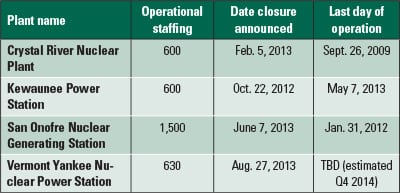 |
| Table 1. List of plant closings. Source: Duke Energy, Dominion, Southern California Edison, and Entergy |
Workforce Options
Entergy claims that it is fully committed to helping employees who aren’t offered positions to find new career opportunities both inside and outside the company. The company does have other nuclear plants in the northeastern U.S.—including Pilgrim, James A. Fitzpatrick, and Indian Point—but realistically, any employee who transfers to one of these plants will have to relocate.
Some VY employees are retiring early, but according to Jeffrey Wimette, business manager for the International Brotherhood of Electrical Workers Local 300, the early retirement formula being offered by Entergy does not bridge the gap for many workers.
Daniel Dominguez, a chief operator at SONGS and business manager for the Utility Workers Union of America Local 246, noted that many of SONGS’ licensed plant personnel have taken positions elsewhere in the industry, including with the Tennessee Valley Authority, at Wolf Creek Station, and at Diablo Canyon. A few workers went to conventional plants and others went to “poles and wires” jobs, but the majority had to leave the local area.
Dominguez said that SCE gave severance packages, extended medical benefits, helped with job placement assistance, and provided educational reimbursement, but in the end it is still difficult for the workforce.
“All of the workers here believe in the benefits of nuclear power,” said Dominguez. “It is disheartening to see 2,200 MW removed from the grid.”
Stumbling Blocks
Nuclear plant workers frequently have more detailed procedures to follow than employees at other facilities. In most cases, safety policies are based on Occupational Safety and Health Administration requirements, so they are similar whether one is working at a nuclear plant or some other electric generation facility. In contrast, nuclear maintenance work practices and operating procedures are often more comprehensive and require step-by-step adherence to NRC guidelines.
It might seem as if the transition to a less-stringent work process would be easy for most people, but other aspects can get in the way of a quick assimilation. Old habits can be hard for some workers to break. When a person is used to having certain things spelled out in black and white, the absence of guidelines can be difficult.
There can also be personality conflicts and difficulty fitting into a new crew after years of adhering to the status quo. Hard feelings can develop when a more senior employee from another plant moves to a facility and bumps a well-liked worker. Old rivalries between workers from different plants can also make the transition difficult. However, most people understand that such situations are out of the employees’ control and that developing good workforce cohesion is in everyone’s best interest.
“One might say the situation ‘is what it is’ and now the employees have to work through it the best they can, and make the most prudent choices they can that have the greatest outcome for the employee and his/her family,” Wimette said. (For an example of how one power plant worker has weathered multiple career transitions, see the sidebar “Thriving Through Job Transitions.”)
Thriving Through Job TransitionsI feel fortunate to have worked in several different capacities throughout my power career—mostly by choice. I began in the trenches—turning wrenches and taking logs—and worked my way up to management positions at commercial nuclear, biomass, and coal facilities. Although the fuels changed, in my experience, there have been more similarities than differences between the various plants. A short history of my career may suggest paths forward for those facing involuntary career shifts. Training for Success My career began in the U.S. Navy’s nuclear power program, where my training included 13 weeks of Machinist Mate “A” School and 26 weeks of Nuclear Power School in Orlando, Fla. Once completed, I moved on to another 26 weeks of instruction at the S1C nuclear prototype unit located near Windsor, Conn. That intense training really set the stage for my power generation career. As in any field, training and a desire to learn are essential to advancement and career options. My first shipboard assignment was in Machinery division aboard the USS Enterprise, which was homeported in Alameda, Calif., at the time. Working in the engine room afforded me the opportunity to learn both maintenance skills and operational proficiencies. The Navy forces young sailors to learn quickly and take on new responsibilities rapidly, because there is always a steady flow of personnel through the organization. The majority of “new hires” will only be with the organization for four years, and even those who reenlist typically remain at their first duty station no more than five years before transferring to a shore command. There are always experienced workers leaving and junior people stepping up to fill their roles. Although there was competition for advancement opportunities, a person could move up quickly by showing initiative and being reliable. If you completed your qualifications, demonstrated technical competence, were dependable, and met performance standards, you could slowly but surely rise to the top of your department’s roster. That was one of the biggest differences that I noticed when I transferred to the civilian power industry. The Civilian Establishment The commercial power plant pecking order was filled with a long list of employees whose seniority, in some cases, went all the way back to plant construction. At my first commercial plant, the workers were unionized, so there was generally little chance of a worker jumping over someone else with more seniority. I certainly respect and understand the benefits of being union represented, but at the same time, I know that it can limit opportunities for some of the more capable young employees. I entered the civilian nuclear world on the management side, which was non-union. When I joined the Quad Cities staff, there had been a lot of management turnover through the years. I was initiated by the union folks who told me stories about “Black Monday,” when the entire supervisory staff received the proverbial pink slip. One worker claimed to have kept a tally of all the supervisors he had worked for over the years. I was number 104, if I remember correctly. Another worker once told me, “I was here long before you came, and I will be here long after you’re gone!” In the end, I guess he was right. However, while he enjoyed the security of a stable career, I’ve enjoyed the freedom of knowing I could thrive in a less-stable career by being flexible. For the most part, unlike the Navy, when folks got a job at a civilian plant in previous eras, they were likely to remain with that company for the rest of their working life. The jobs paid well and included excellent benefits. Once employees established themselves in their positions, it was unlikely that they would need, or even want, to leave. The system made for a very experienced and capable workforce. However, when business changes lead to a plant closure, workers who excelled in one niche may need to develop new skills and habits to thrive in a new niche. The Contractor’s Role Unlike most people in my situation, I voluntarily left my nuclear plant job to return to my hometown and other opportunities, but I kept my foot in the door by continuing to work outages. Because Quad Cities had two units with outages in alternating years, I left my home state seasonally every year to work on one unit or the other. The work was similar to what I had done as a full-time supervisor, with the exception that I frequently managed other contract workers with little direct knowledge of the plant layout. The arrangement was beneficial for the plant, because I could use my experience and knowledge of processes and procedures to lead skilled workers who were not familiar with the facility. Companies have always relied on contract help during outages, and that trend is unlikely to end anytime soon. The benefits are obvious: The company avoids providing health insurance, retirement benefits, or long-term pay, as it would for permanent staff. For the contract worker, the benefit of having a well-paying job, if only for a short period, is a plus. The work also allows flexibility. Although a person can’t control when a plant schedules its outages, the individual can choose whether or not to participate. When outage season slows down, some workers can collect unemployment while they take the summer off. During spring and fall outage periods, many workers are able to jump from one outage to the next, with few days off during the period. In essence, they have full-time work, even if they have to travel and sleep in hotels for the duration of the job. Creating Structure My situation changed again seven years ago, when I was hired to be the operations and maintenance manager at a brand new biomass plant. The transition was a great experience for me. I was coming from the highly structured world of nuclear power, with its detailed procedures and “by the book” mentality, to a facility that was owned by a startup company beginning with virtually a blank sheet of paper. I arrived as the fourth employee while the plant was still under construction. Soon after, the original plant manager resigned, and I was left to establish programs and procedures from scratch. It was eye-opening for me to staff a facility on a tight budget that had been established four years earlier using extremely optimistic wage and benefit estimates. The biggest lesson I learned was that hiring local residents with little or no experience was a better option than bringing in more qualified personnel from outside the area. The plant was located in rural Minnesota, which can be a culture shock for many people. What I found was that employees who moved in from other places soon left to pursue different opportunities, while local hires learned the technical skills in time and remained at the facility as stable and reliable workers. Training was a challenge for management, but it was critical for the workforce. With the help of supervisors and some of the more experienced workers, I established a qualification program similar to what I had seen used in the Navy. The process included instruction on safety and basic machinery principles. It also required trainees to perform various tasks in the presence of a qualified observer in order to demonstrate proficiency and understanding of the plant operation. The training took time and relied on careful transfer of knowledge from more experienced workers to the newly hired employees, but in the end it seemed to provide satisfactory results. From Nuclear to Biomass to Coal As time passed, ownership changes resulted in management changes, and I again chose to look for employment elsewhere. Enter the local coal-fired power plant. I was offered the opportunity to join the Big Stone Plant as business supervisor. The position suited me but was a slight change in emphasis from my previous roles. I had always worked with budgets and managed costs, but in my new position, that was my primary focus. I was encouraged to utilize my experience performing additional plant-related duties, such as helping with boiler inspections, conducting safety walkdowns, and standing weekend duty, but my main role was compiling the numbers. Nevertheless, I was at a plant very similar to all the others. In the end, maintenance workers do maintenance, operators operate, and managers manage. Yes, there are different policies and procedures that each entity must comply with, but if power plant workers are competent in their positions at one power station, they likely can gain similar competency at another location. Finding That Dream Job Currently, I no longer work at a power plant. The fork in my road led to a new career in the media industry, and I love it! Dealing with change is rarely easy, but it can be very gratifying. Although the tasks, tools, schedules, and working environment are all different from power plant work, I am finding that many of the personal and professional skills and habits developed over my power plant career are useful in this new one. Attention to detail, reliability, time management, clear communication, and a willingness to learn new things are all habits that can make other former power plant workers successful in many new fields. —Aaron Larson is a POWER associate editor. |
Not the First Rodeo
According to the NRC, nine reactors larger than 556 MW (the smallest of the four currently being removed from service) have previously been decommissioned in the U.S. One of those provides an interesting perspective, having shut down 25 years ago this summer.
The 913-MW Rancho Seco Nuclear Generating Station (Figure 5) was a single-unit, Babcock and Wilcox pressurized water reactor. The site is owned by the Sacramento Municipal Utility District (SMUD), and the plant began commercial operation on Apr. 18, 1975. In the summer of 1989, after a troublesome operating history in which the plant’s lifetime average capacity factor was less than 40%, district residents voted to shut the plant down permanently. The facility had plunged SMUD under water financially, which had resulted in electricity rates nearly doubling in the years leading up to the vote.
Although SMUD declined to comment for this article, the Lodi News-Sentinel newspaper archives painted a fairly grim picture of the workforce reduction process. The plant was hugely overstaffed, with a reported head count of 969 employees and another 676 contractors and consultants working at the facility in February 1989. At that time, SMUD announced the layoff of 200 contractors to trim some of the fat.
On June 8, 1989, following the vote that confirmed the plant’s fate, the Rancho Seco CEO quit and 417 additional contractors received layoff notices. In the weeks that followed, a voluntary separation package was offered, which allowed workers to quit rather than being laid off or fired.
The carrot on the end of the voluntary separation stick was eight weeks of base pay plus an additional week for each full year with the company, up to a total of 26 weeks of pay. Preliminary reports had also noted that four months of paid health benefits would be given to employees with less than four years’ service, and six months of benefits would be provided to those having more than four years with the company. Furthermore, the plan included counseling services to assist with resume writing and job search skills.
Employees actually camped overnight in front of SMUD headquarters to ensure they didn’t miss the opportunity to quit, which was on a first-come, first-served basis. In the end, 330 people voluntarily separated on the first day of the program.
Of course, that wasn’t the end of the job losses. All told, SMUD would eliminate 1,000 positions by the end of 1989. Headhunters from Portland General Electric reportedly swooped in to hire some SMUD employees. It was looking for the cream of the crop to work at its Trojan Nuclear Power Plant. Little did they know that it, too, would close only a few years later.
This only goes to show that electricity generation is a business and, like any other industry, cost matters. If a plant isn’t competitive, companies will cut their losses, and employees can find themselves on the outside looking in. ■
— Aaron Larson is a POWER associate editor (@AaronL_Power, @POWERmagazine).
